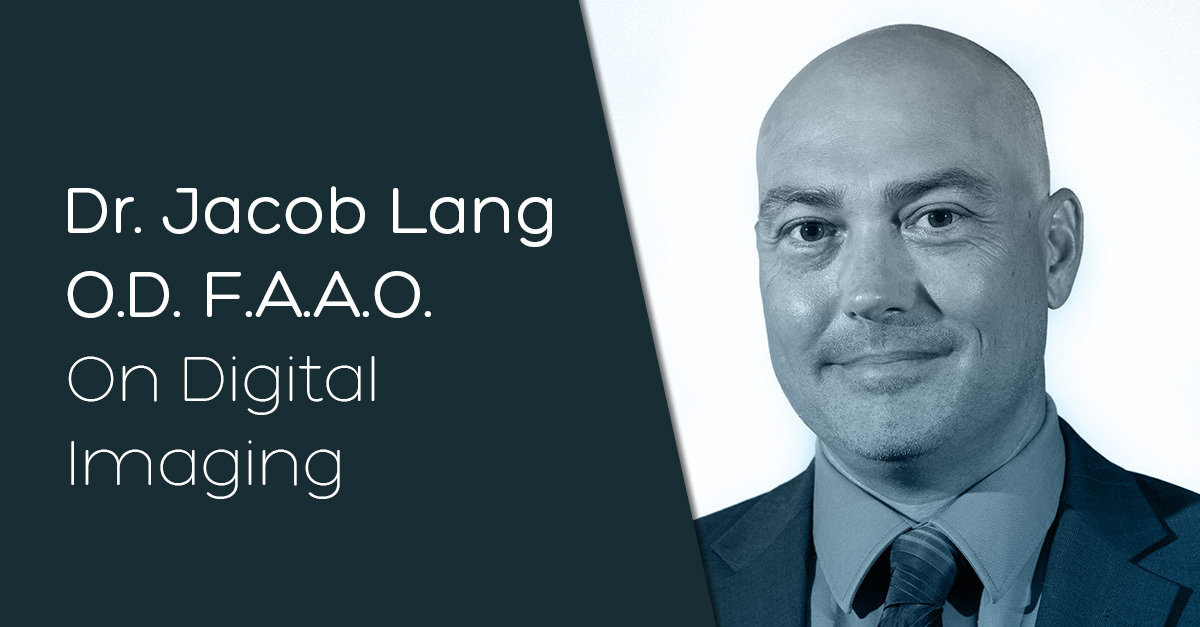Dr Jacob Lang, O.D., F.A.A.O on digital imaging in eye care
7th June 2022

Dr. Jacob Lang is a Diplomat of the American Board of Optometry, a fellow of the American Academy of Optometry and an Adjunct Clinical Faculty for the Illinois College of Optometry and Salus University. A specialist in dry eye and ocular diseases, as well as therapeutic contact lenses, he certainly knows his stuff. That’s why we wanted to catch up with him around digital imaging in eye care…
What’s your background in eye care and what role has imaging played in your journey?
I went to optometry school in Boston and graduated in about 2003, before doing another year specializing in corneal disease with contact lenses. At the time, digital cameras were only just coming into the market, so we had to be selective in our education, which had predominantly been with ocular photography using film.
I was right on the cusp of when digital imaging exploded. I was lucky to be able to start taking images through the microscope oculars without adapters, and the feedback and gratification of being able to see and talk about these images straight away was very impactful. Previously, for example, we wouldn’t see the film images of an ulcer, for example, for at least two to three days. We would wait for the photos to be developed and then reference a log book to decide what shot was used for a given patient, then we would need to put it in the patients’ chart.
The scale of its impact meant I had to take it forward into my practice and education of other doctors. This is how I got into documenting and imaging, and we’re now seeing that next level explosion of technology with AOS and the likes of its ability to grade redness values, as opposed to comparing it to standard photos and grading scales.
It’s our calling as eye doctors to stay on top of everything that’s going on in the industry and the best way to do that is with continual education and exploring the best options for patients. I’ve found the best way to do this is to have friends in the business as colleagues you can talk to, as well as being involved in societies locally and internationally.
How important is it to have technology like digital slit lamps in practice?
It’s very important for eye doctors, particularly when it comes to educating patients and showing them a picture of what’s going on or what you’re concerned about. The level of engagement the imagery on offer engages patients into the care of their eyes to a level only this sort of tech can provide.
Getting this buy-in from patients no matter the ocular pathology condition is so important – it shows we care and that we’re using the best, newest technology to give the highest-level care. It shows there’s something wrong and there’s something we can do about it. I always tell patients that eye drops don’t work if you don’t put them in your eye, so I need them to be engaged and on board with this. Technology is used to get them on side so much.
What does the future hold with digital imaging technology?
I think the integration of AI is going to be huge with regards to grading and detecting pathologies, getting the technology to do that will lend itself to better care. That’s what we talk about in terms of OCTA [ocular coherence tomography angiography] regarding retinal disease, diabetes and glaucoma. We are getting to the point where we are measuring the function of retinal tissues, which is interesting for finding out why people get glaucoma and why it doesn’t do what it’s supposed to do. The resolution of images keeps improving, too – even the advances with iPhone picture quality mean we can generate better images with slit lamp adapters. It’s all very exciting!
